Secret meaning behind Queen Camilla’s gown and robe
Queen Camilla’s coronation gown and robe included touching nods to King Charles and the late Queen Elizabeth.
Royals
Don't miss out on the headlines from Royals. Followed categories will be added to My News.
Queen Camilla’s stunning coronation gown, created by her favourite designer Bruce Oldfield, was packed with hidden meanings.
Underneath the Robe of State, originally made for Queen Elizabeth’s coronation, Queen Camilla’s ivory, silver and gold embroidered gown combined a nod to tradition with modern touches.
The dress featured fine yet intricate embroidery of “daisy chains, forget-me-nots, celandine and scarlet pimpernel, representing the King and Queen Consorts affection for nature and the British countryside,” said the Palace in a statement.
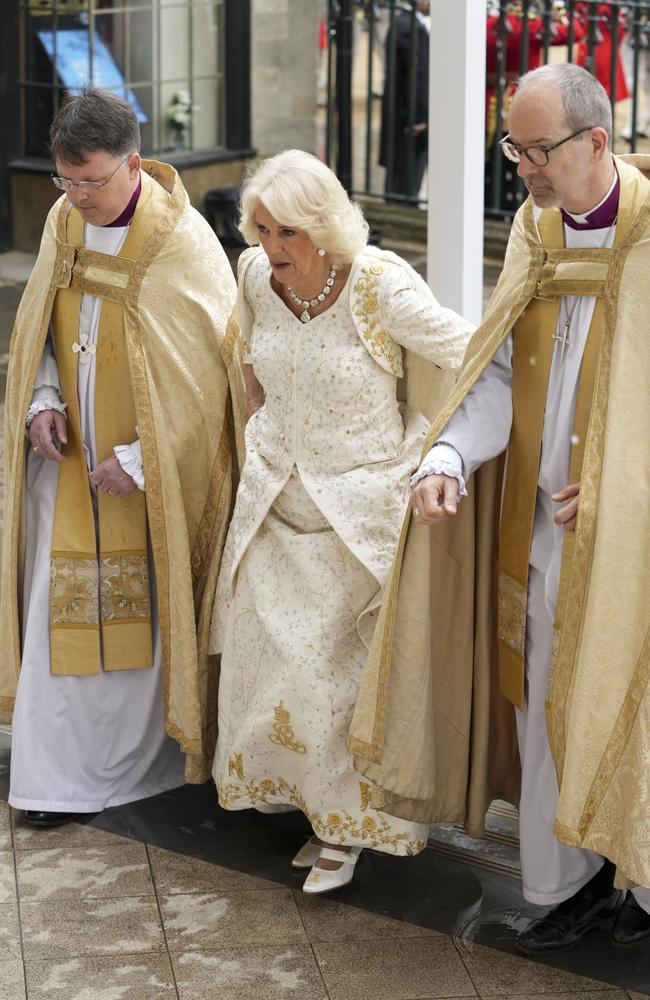
In a touching tribute to the late Queen Elizabeth, her favourite flower, Lily of the Valley was included on Camilla’s robe.
The robe also featured the national emblems of a thistle for Scotland, an Irish shamrock and an English rose.
Bees and a beetle also featured in a nod to King Charles’ love of nature.
Amid the grandeur and majesty of King Charles III’s coronation, the newly-crowned Queen Camilla shared a private moment with her royal husband.
“It’s super, amazing,” Queen Camilla said as the couple passed thousands of British flags along the coronation route near Trafalgar Square, according to a lip reader.
“It looks wonderful,” the King added, the lip reader told The Daily Mail. “So beautiful,” the Queen replied.
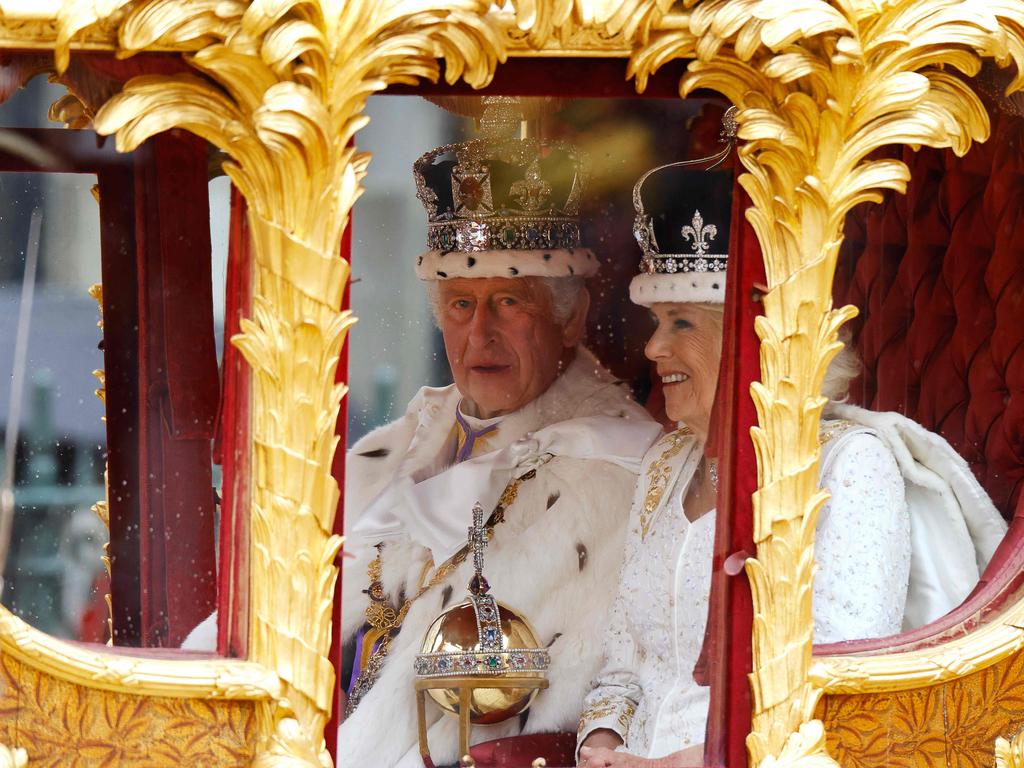
The Queen Consort was crowned beside her husband the King — a symbolic moment that seals Camilla’s place in the history of the monarchy.
She was anointed and crowned in a similar but simpler ceremony, in which she was presented with a ring that “marries” her to the King.
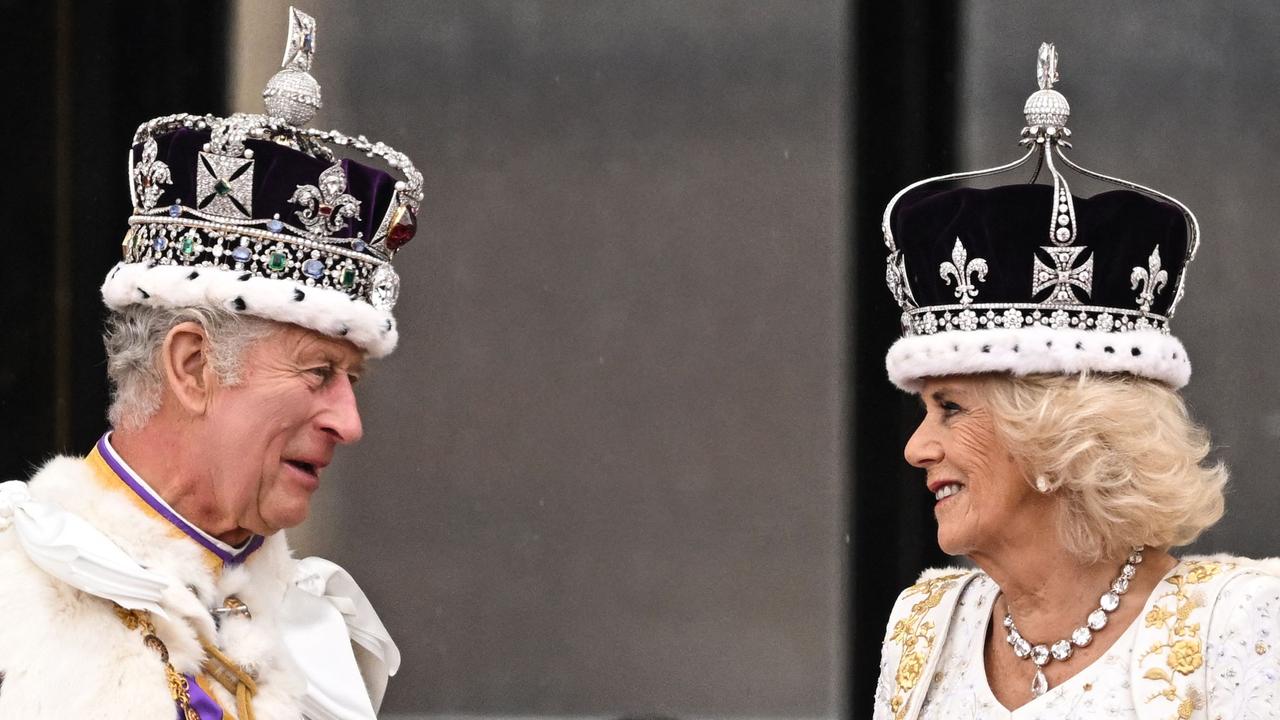
The Koh-i-Noor diamond did not feature in the coronation of the Queen Consort, as Camilla opted to reuse the crown it was once set in instead.
Camilla becomes the first consort since the 18th century to reuse a crown at a coronation. She pays tribute to the late Queen by replacing the Koh-i-noor with the Cullinan III, IV and V diamonds, all of which were part of her jewellery collection.
KING CHARLES III OFFICIALLY CROWNED
The world watched with collective heart in mouth as the Archbishop of Canterbury, Justin Welby, had a momentary struggle to fit the crown on Charles’ head.
At the crowning moment of the coronation – literally – the archbishop held the ornate Crown of St Edward above the seated monarch’s head, slowly brought it down.
Then he found himself in trouble. For a couple of awkward seconds that seemed to drag forever, the churchman realised it wasn’t fitting properly, twisting it gently back and forth to make it secure – then leaning in to peer at it closely.
Finally satisfied, he stepped back as Charles kept a straight face, and proclaimed “God Save the King”. And with that, the millions of people watching breathed a sigh of relief.
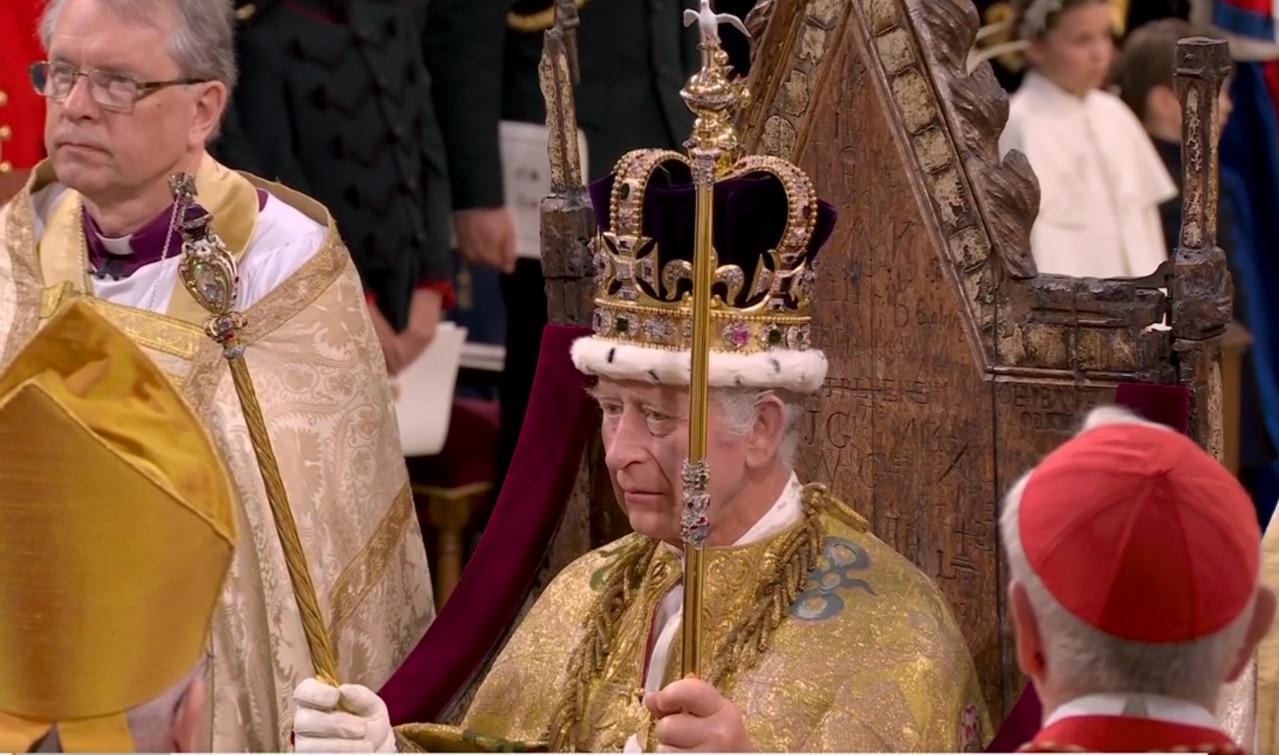
Charles kept a straight face throughout and the episode passed, allaying some observers’ cheeky suggestions that it could have become another “pen moment” – a reference to the episode last year when he lost his temper with a pen that didn’t work.
And when Welby came to placing the Crown of Queen Mary on Camilla’s head, it went perfectly.
That crown was made in 1911 and used to contain the famous and controversial Koh-i-Noor diamond, but that was moved to the Queen Mother’s crown in 1937, where it remains.
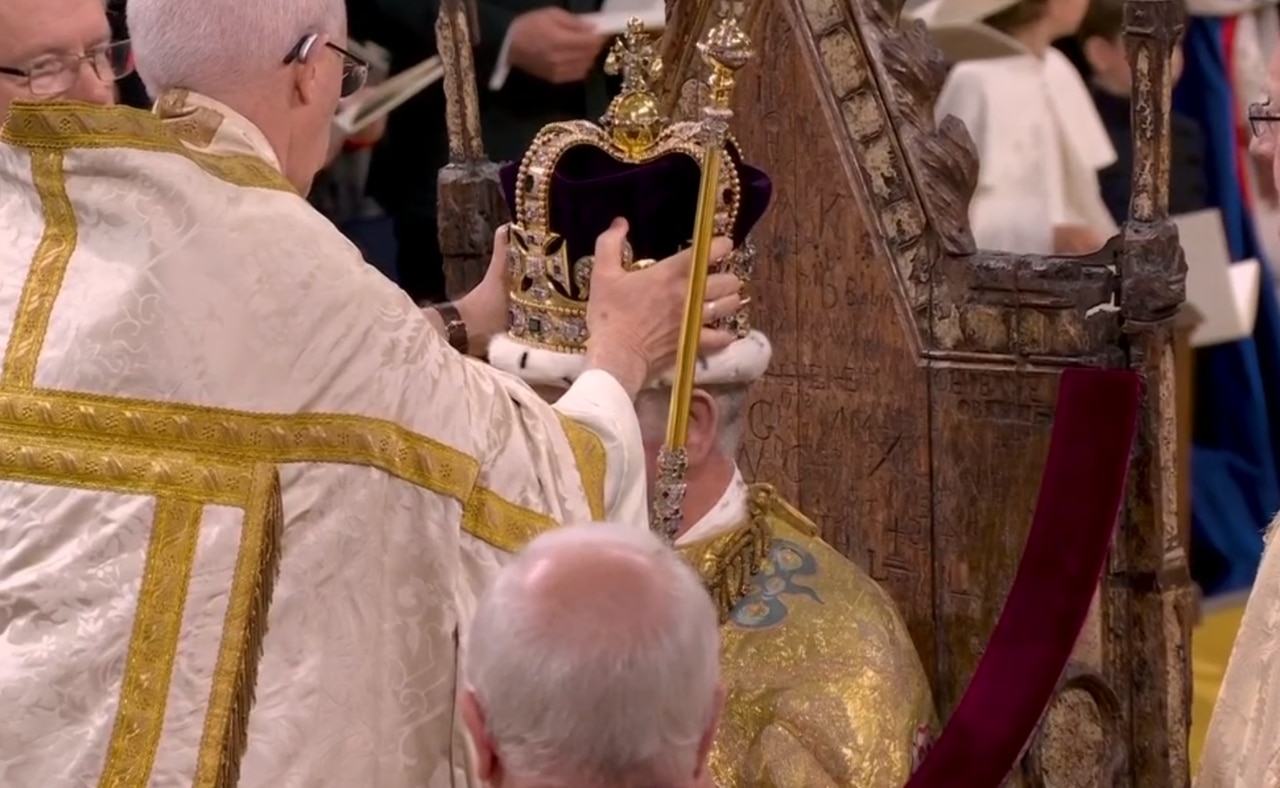
The monarch appeared calm throughout the service, despite a few wriggling fingers and a bite of his lip, as his historic coronation took place at Westminster Abbey.
“As he started to walk I would say he even looked happy. He was smiling and nodding,” said body language expert, Dr Louise Mahler.
“Camilla looked as though she would trip on her dress with tiny short steps. Her smile was tense, her eyes darting … [but] Charles searched the crowd with his eyes and seemed to be enjoying every moment, taking it all in.”
As Charles sat at his chair he looked emotional and suddenly the give it away in his hands. He was pressing and wriggling his fingers together and sucked in his lips between his teeth.
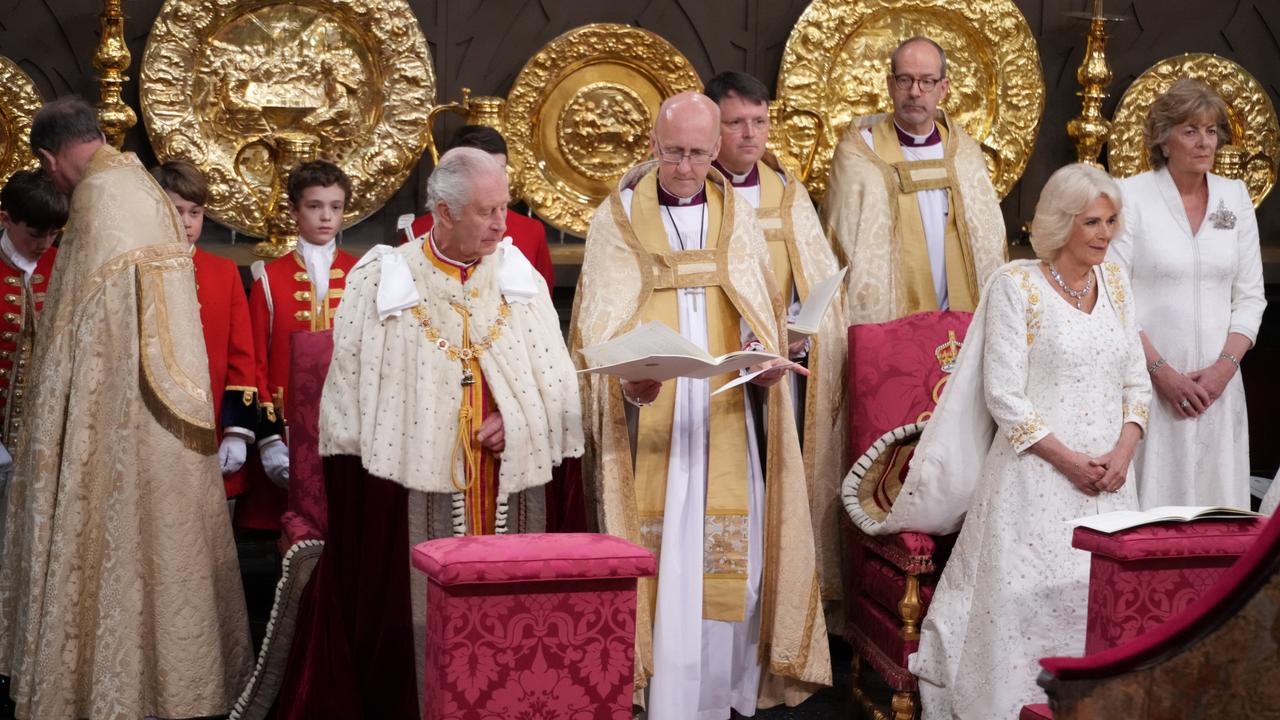
Modern twists throughout ceremony
The ceremony was steeped in tradition, with a few modern twists.
Charles is now the first monarch to ever pray publicly at a coronation, asking for grace to be “a blessing to all … of every faith and belief” and to serve the pattern of Christ.
A special personal prayer was written for the King to reflect the “loving service” theme of the service, which was filled with symbolism as well as contemporary twists.
As he took the Oath, the King said: “I, Charles, do solemnly and sincerely in the presence of God profess, testify, and declare that I am a faithful Protestant, and that I will, according to the true intent of the enactments which secure the Protestant succession to the throne, uphold and maintain the said enactments to the best of my powers according to law.”
The King signed copies of the Oaths as the choir sang.
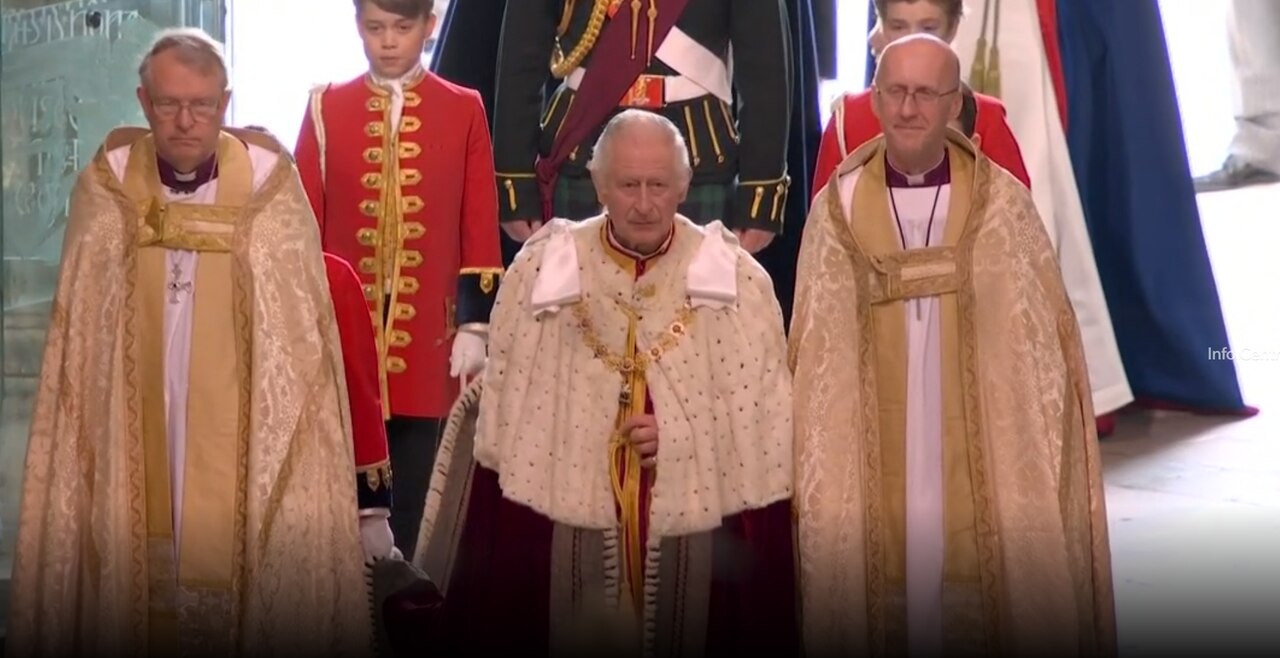
He was then anointed with oil in the most sacred and religious part of the ceremony.
Charles sat in the Coronation Chair for the presentation of regalia, as an ancient Byzantine chant echoed through the Abbey, which included a slew of multi-faith leaders.
The new monarch was then crowned with the Crown of St Edward.
The Archbishop of Canterbury paid homage to the King and the 2300 guests echoed his cry of God save the King.
However, in another break with tradition, the Prince of Wales was the only blood prince to pay homage during the service.
Kneeling before the King, he said: “I, William, Prince of Wales, pledge my loyalty to you and faith and truth I will bear unto you, as your liege man of life and limb. So help me God.”
Journey to Westminster Abbey
Ahead of the ceremony, the King and Queen travelled the 1.5km route from Buckingham Palace to Westminster Abbey in the Diamond Jubilee State Carriage.
Guards roared and saluted as it trotted out of the palace quadrangle with the couple sitting side-by-side, signalling the start of the official procession to the Abbey.
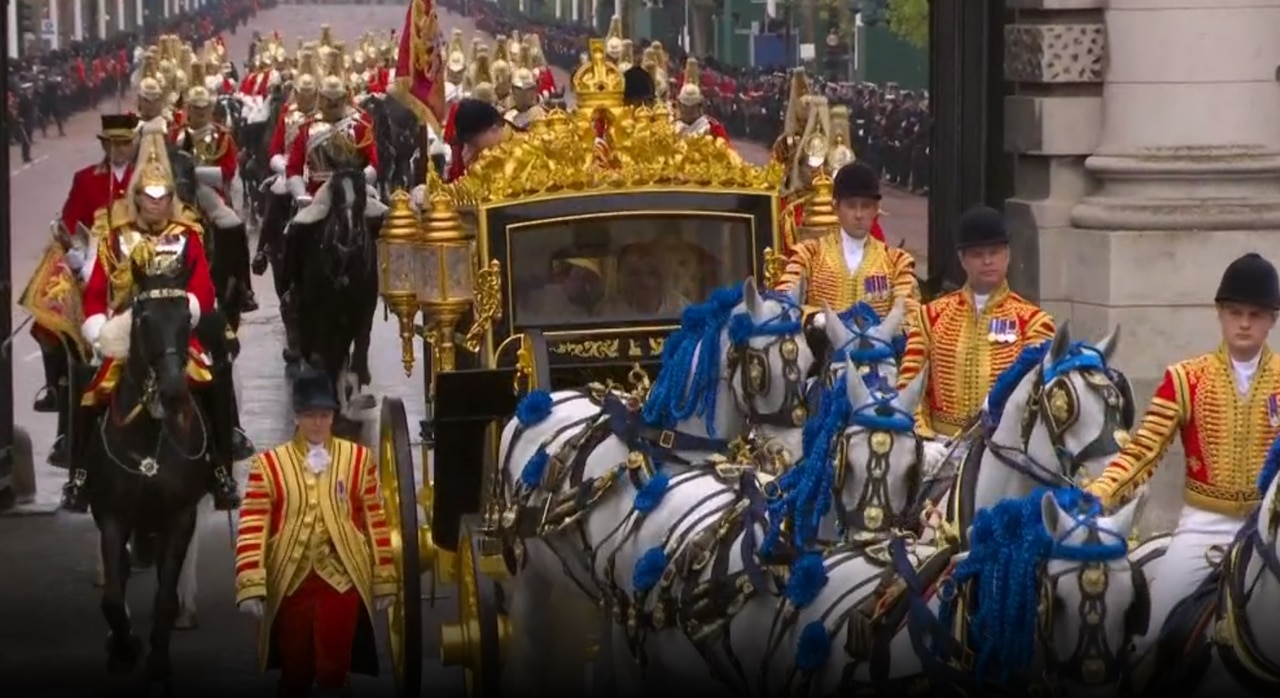
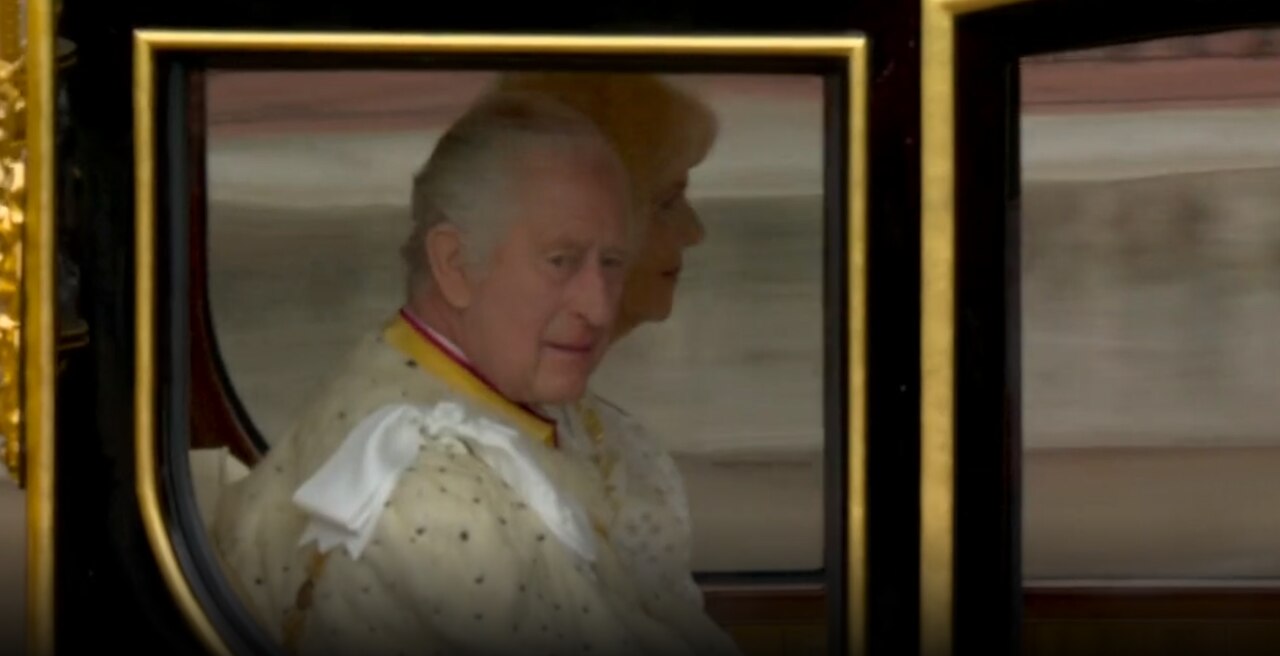
The King looked serious and thoughtful, reminiscent of his late father Prince Philip, as they came out of the palace gates.
He began smiling and waving, as did Camilla, as cheering crowds reacted to the realisation their monarch was in front of them.
“Hip-hip-hooray!” shouted one section, jostling for a good view.
Others just screamed in delight.
Mounted police led the way, with the cavalry behind.

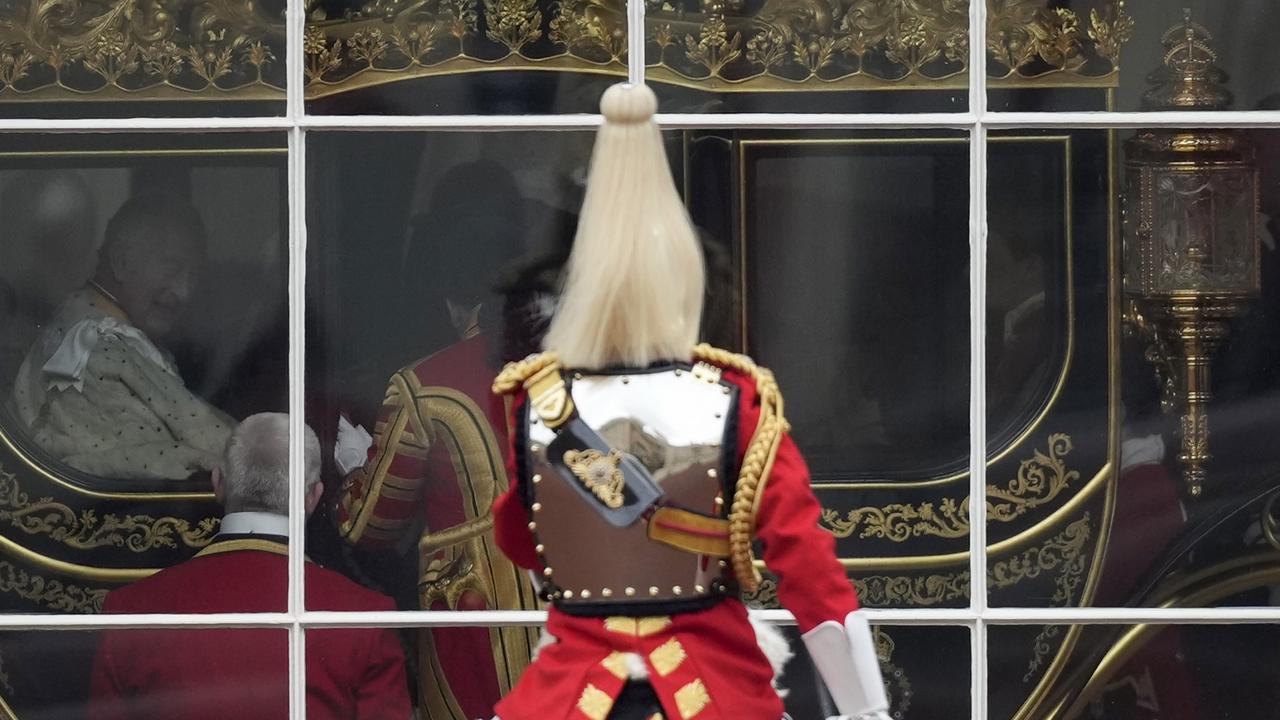
Hidden meaning in couple’s waves
The royal couple’s cream and white robes stood out through the carriage windows – a contrast to the red and blue tunics of their military escort.
Royal detail-hunters might have noticed that the King’s wave was a gentle, “regular” gesture with an open palm, as opposed to the caricature sideways salute often associated with the royals.
Both King and Queen Consort were sincere but sparing with the waves, probably in recognition of the solemn and serious nature of the occasion – in particular this section, ahead of the ceremony.
The crowd, however, was jubilant, with cheers swelling as each new section of the onlookers caught a glimpse of the procession.
Also making noise, as the procession passed Trafalgar Square, were Republic demonstrators – the royal couple showed no sign of noticing them
Rain no deterrent for wellwishers
Crowds stood ten-deep along Broad Sanctuary, Parliament Square, Whitehall, Horse Guards Parade, Horse Guards Road and The Mall.
Watching a television in their quiet residential street in Westminster were David Newman-Newland, 76, and Keith Hollier, 78.
David was six when he watched the Queen‘s coronation from a small television and the family sitting room.
“It was all very impressive, it didn’t stop raining then and it’s the same today,” David said.
“We watched it on a tiny TV and listened to the radio.
“We thought the Queen would go on and on and on, there’s no comparison to her but she’s dead and long live the king.”
Keith said: “Charles is the king now, life goes on.”
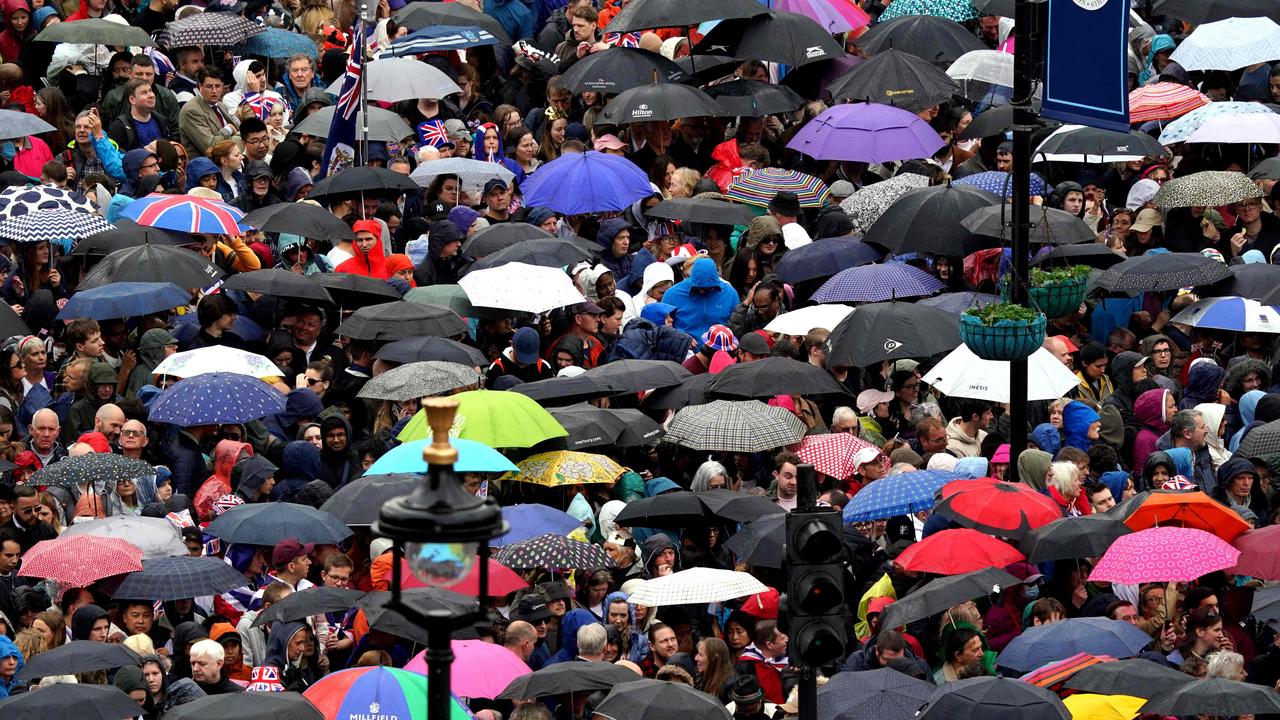
Deep symbolism within ceremony
The bestowal of the coronation crown upon his head cements Charles as King in the nation’s psyche. Crowning a new sovereign is a deeply religious process, steeped in pageantry.
The six phases of the coronation are the recognition, the oath, the anointing, the investiture, which includes the crowning, plus the enthronement and the homage.
The King and the Queen Consort process from the West Door to be greeted in the Quire by rising choral cries of “Vivat Regina Camilla” and “Vivat Rex Carolus” — Latin for “Long live Queen Camilla” and “Long live King Charles”.
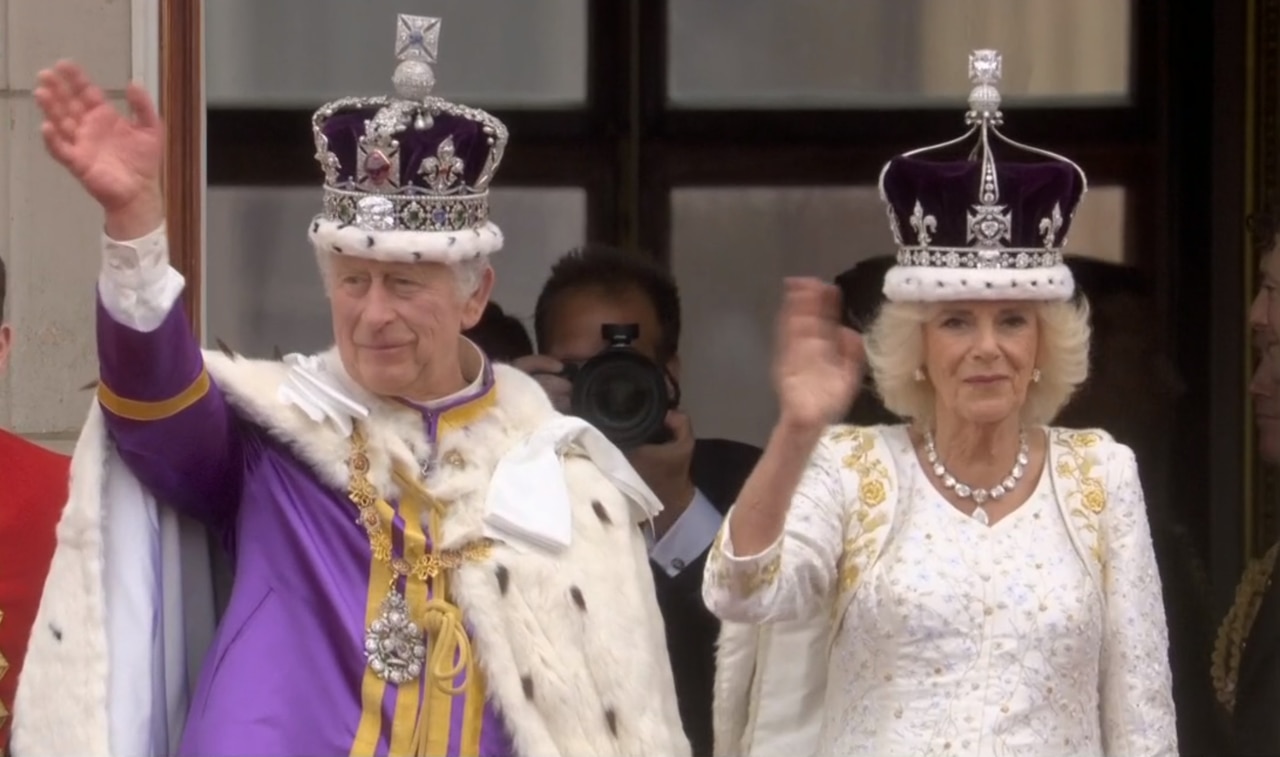
The King stands in the theatre — the central space in Westminster Abbey — and turns to show himself “unto the people” in each of the four directions, east, south, west and north.
The Archbishop of Canterbury proclaims Charles the “undoubted King” and asks the congregation and choir to show their homage and service by crying out “God Save King Charles”.
The King promises to reign according to law, exercise justice with mercy, and maintain the Church of England.
With the Sword of State carried before him, the King declares, with his hand on the Bible: “The things which I have here before promised, I will perform, and keep. So help me God.”
After the oath, the sovereign is “anointed, blessed and consecrated” by the Archbishop of Canterbury in what is the central act of the religious ceremony.
The King removes his crimson Robe of State and sits in the Coronation Chair — made for King Edward I in 1300.
The archbishop uses the golden eagle-shaped ampulla — which pours the oil from its beak — and the 12th-century silver-gilt anointing spoon, which is the most ancient treasure of the Crown Jewels, to anoint the King in the form of a cross.

Having been sanctified, the sovereign puts on a sleeveless white garment — the Colobium Sindonis — and then a long robe of cloth of gold — the Supertunica.
The King is presented with the jewelled Sword of Offering and his heels are touched with the Gold Spurs — the symbol of chivalry.
He puts on the long Robe Royal coat of gold cloth and the Stole Royal before the coronation ring is placed on his finger and, having taken the Sceptre with the Cross in his right hand and the Rod with the Dove in his left, sits on the Coronation Chair.
He is then crowned by the Archbishop with St Edward’s Crown, with the congregation shouting out “God Save the King”.
After a blessing, the King goes to his throne to be “lifted up into it by the archbishops and bishops, and other peers of the kingdom”.
This symbolises the monarch taking possession of his kingdom.
More Coverage
Originally published as Secret meaning behind Queen Camilla’s gown and robe





